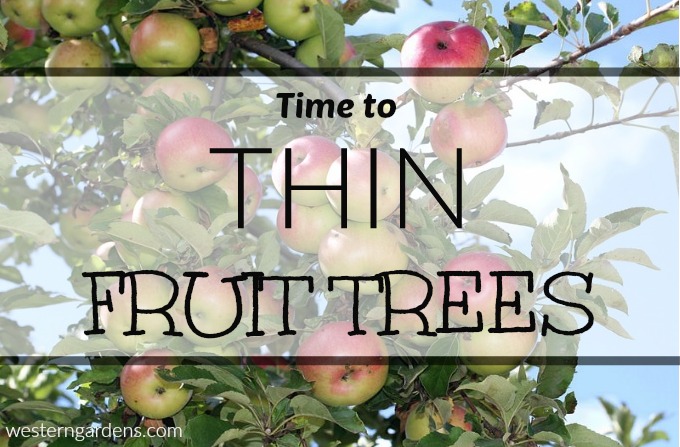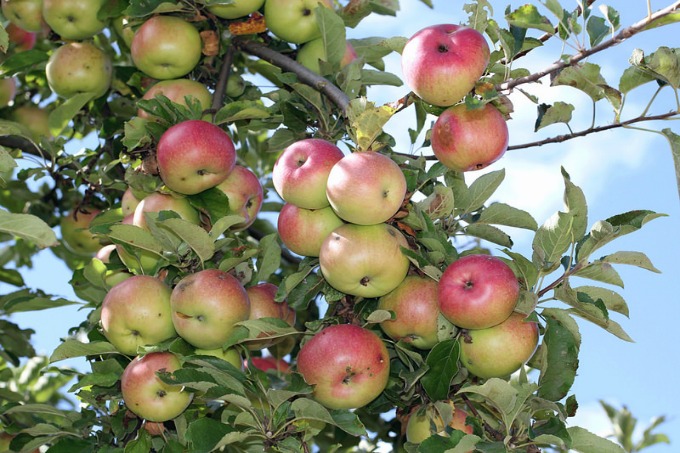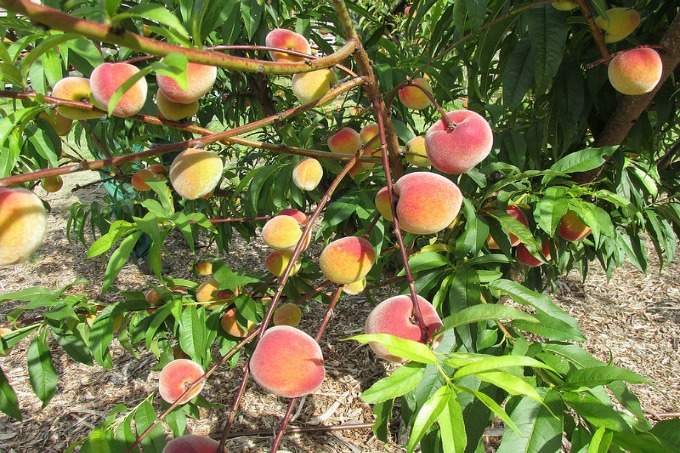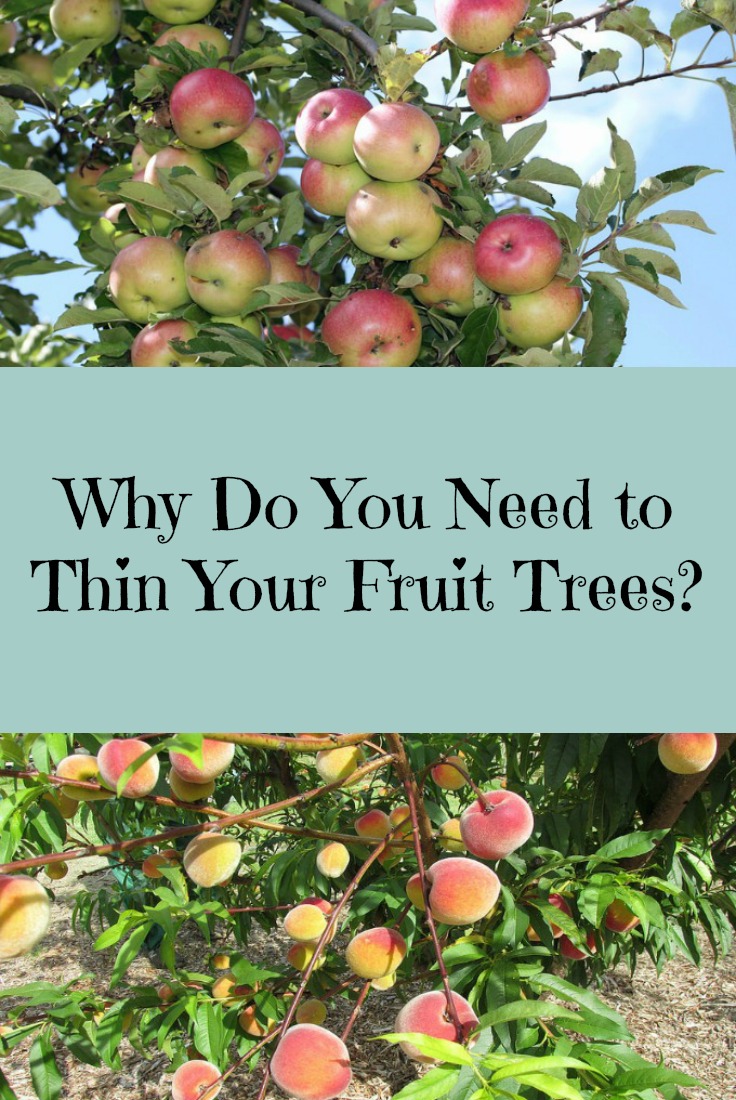Welcome Gardening Friend! Glad you dropped in.
Did you know it is important to thin fruit trees from all the blossoms that were pollinated? Read why it is important and some tips on how to do it!

If all went well in your garden this year, your fruit trees were covered in blossoms that were successfully pollinated. Now your tree branches are filled with a plethora of small fruit that promises to be a bumper crop. All that’s left to do is to keep an eye out until harvest to treat any insects or diseases, right?
Now is the time to thin your fruit trees and remove a lot of the developing fruit.
“Wait,” you say. “Don’t I want all the fruit that the tree produces? I was hoping to can up lots of jams, as well as eat them fresh. If I take some off, I certainly won’t have enough!”

These are clustered far too close together. Image by Swallowtail Garden Seeds under a Flickr Creative Commons Attribution License
Think About How the Tree Produces Fruit
Each year, the tree is driven to create flowers and fruit in an effort to reproduce itself. Since at least some of them are destined to fail (frost at a tender time, failure to pollinate, and other disasters), the plant will produce as many fruits as possible.
The most important part of the fruit, reproduction-wise, is the seed inside. The fruit surrounding it is meant in part to help entice animals to eat the fruit and deposit the seed somewhere else, where it can germinate. However, it takes energy and nutrients to form the sweet flesh. When the tree is loaded up, these nutrients have to be spread out between them and you get smaller fruit overall. They will also likely not be as sweet as they could have been if thinned.
You Also Run the Risk of Tree Damage
Even though the sight of a tree branch completely loaded with fruit is a delightful thought, it can be very stressful for the tree if it has to bear so much weight. In some cases, it can even cause the tree to break. You could try to prop up the branch in an effort to avoid this, but it is safer if you just remove the proper amount.

These peaches are properly thinned and look like they’ll be luscious! Image by Forest & Kim under a Flickr Creative Commons Attribution License
How DO You Thin Your Fruit Trees, Then?
When the fruits are about 3/4″ in diameter (about the size of a dime), it’s time to perform this task. Grab a pair of trusty hand pruners and head on over to your tree. You may also need a ladder, depending on height. Start looking over the branches to find the best fruit. Take off any of them with visible damage or that is smaller than others in the cluster. Leave only one fruit out of each bunch. In the end, you want all fruit to be no closer than 6″ for optimal results.
In the end, you want all fruit to be no closer than 6″ for optimal results. Your tree will thank you, and the fruit that you harvest will be large and higher quality.
